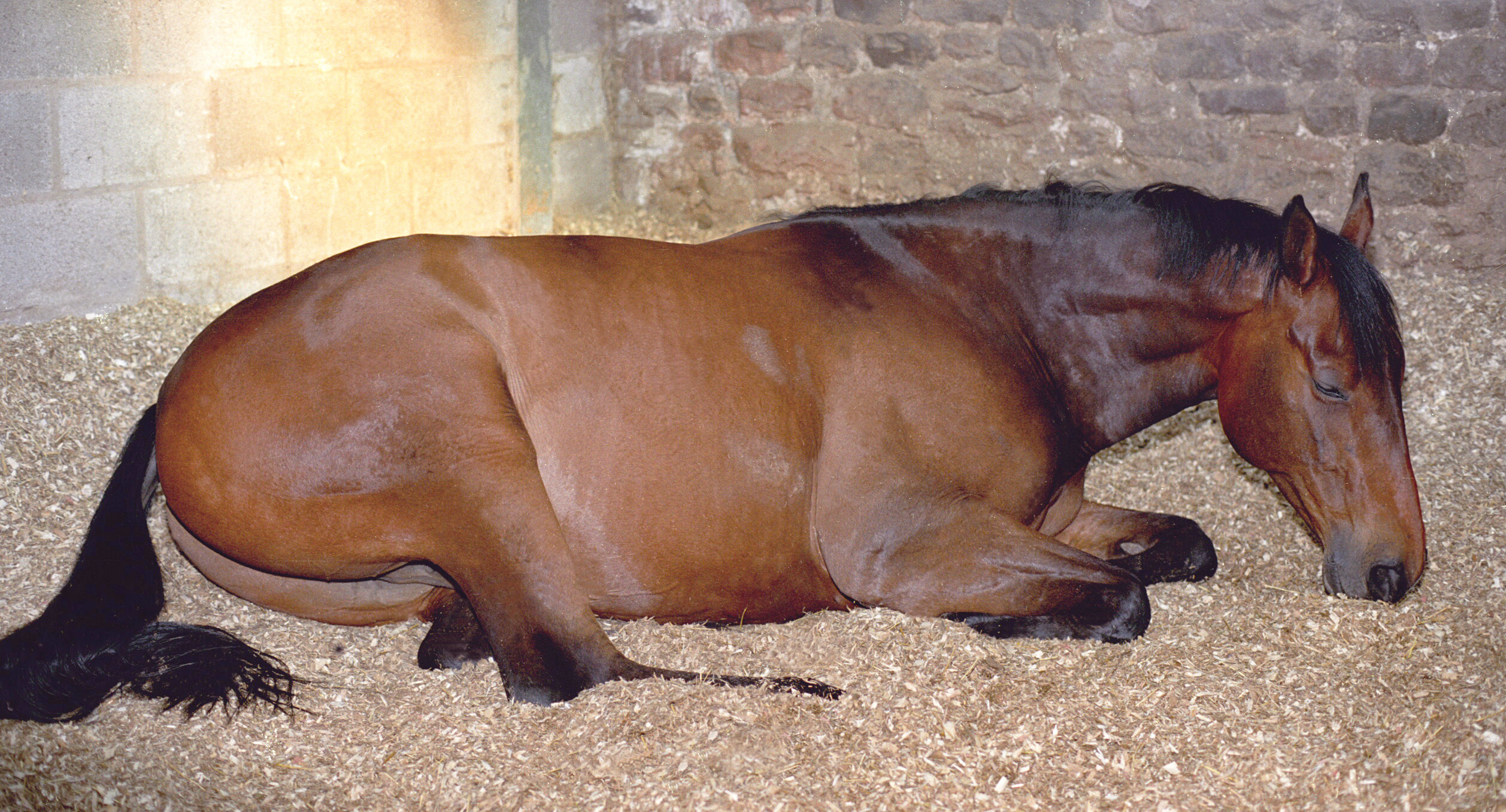Clean and comfortable beds are healthy
Stabling horses is not natural, but living out is not an option that many people can give their horses, perhaps due to land constraints, or the need to clip thick winter coats to keep working horses comfortable, or possibly because the breed and type of horse wouldn’t cope well with the weather and conditions of a typical British winter.
The most common form of stabling is still a loose box, of varying size, but usually a minimum of 10ft x 10ft for ponies and 12ft x 12ft for horses gives adequate room to lie down, stand up and turn in comfort. Loose boxes traditionally were arranged to open directly onto the external yard, but many are now conveniently sited inside modern, airy buildings, which allows stable management access in dry conditions and the possibility of areas for washing, grooming and veterinary examinations.
Wherever the stable is located, one of the key considerations for long-term equine health, not to mention grooms who suffer from a degree of asthma, is air quality, as this impacts very significantly on respiratory health.
Given that no-one is every knowingly going to introduce seriously harmful substances into the stable environment, for example poisons or toxic chemicals, the main issues that impact on air quality and are harmful to respiratory health can really be placed under three main headings:-
- The dust content in the stable environment
- The number of mould spores in the stable environment
- The concentration of ammonia and other harmful gases released from droppings and urine
All of these things are entirely under the control of the people caring for the horses and whilst it’s fair to say that no stable environment is ever totally free of these potentially harmful contaminants, the degree to which they are a problem is influenced not only by the bedding product choices made, but also by the management methods in any particular yard.

Dust content
Dust is everywhere in the horse’s environment – it’s in his forage, on his coat and to a greater or lesser extent, depending on the product chosen, it’s in his bedding. It also blows into the stable from the yard and it gets everywhere, accumulating in direct proportion to the lack of regular cleaning of the whole stable environment.
It’s good practice to completely clean out the entire stable block or barn at least once a year and for most people, it’s a ‘spring clean’ routine. Getting rid of all old bedding, forage, cobwebs and thoroughly washing everything with a licensed product that ‘kills’ bacteria, common fungi and moulds is a really good idea and helps ensure that horses coming in for the winter aren’t immediately challenged by high levels of contaminants left over from goodness knows how long ago.
To then maintain as low a dust level as possible makes sound common sense as it helps to keep horses’ respiratory systems healthy and prevent the onset of the distressing condition Recurrent Airway Obstruction (RAO - formerly known as COPD).
Veterinary research in the racing industry has produced valid data that a loss of as little as 1% of respiratory function can mean the difference between winning a sprint race and being last! No wonder the good trainers in the racing industry are increasingly fastidious with stable management!
Dust in the lungs isn’t ever good news and whilst it’s beyond the scope of this article to discuss the veterinary consequences – and associated costs, most people know that dust levels should be minimised in every way possible.
Mould spores
Moulds are also a problem and are a common trigger for distressing episodes of RAO in susceptible horses. In very simple terms, moulds need moisture to thrive and reproduce, so dampness in the stable environment should be avoided as far as possible.
Keep beds dry, as both deep litter and leftover soaked hay are ‘mould heaven’. Deep litter might be convenient for horseowners or yard staff, but it’s bad news for the respiratory systems of the all the equines forced to live in such an environment.
Soaking hay is also to be avoided when respiratory health is the issue, as not only does it wash out the soluble sugars, vitamins and other water soluble nutrients – even with a brief period of soaking this happens - it also ‘activates’ mould spores and they love it, starting to increase their numbers dramatically! Then putting such damp hay into the stable introduces drips and damp hay into the bedding, creating utopia for moulds and a horrendous challenge for the horse’s respiratory system.
Ammonia
When droppings and urine get together in a typical equine bed, one of the results is ammonia, a pungent gas that’s irritant and very harmful to the respiratory system and because it is potentially so damaging, it elicits such a dramatic reaction that it makes horses and people cough when levels rise.
Anyone who’s ever been in a dirty stable environment will recognise the smell of ammonia and when it’s a really dirty stable, the level of ammonia can be high enough to even make your eyes water!
Ammonia is also damaging to hoof horn, softening it by breaking down chemical bonds in the structure, allowing bacteria to penetrate and cause problems like the well-recognised and also very smelly condition known as ‘thrush’.
Choice of bedding will greatly influence the potential for ammonia to form, as will the mucking out management method employed. Given the potential for ammonia to harm not just lungs, but feet and eyes too – would you want it in your bedroom?
Stable Management
As horseowners and riders, we are all ultimately responsible for the welfare and good health of the horses in our care. We derive a great deal of pleasure from them and making the best choices for forage, bedding and stable management is an issue that deserves a renewed focus. Take a look at your horse’s bedroom with an open mind and be honest – could you do better for him this winter?



